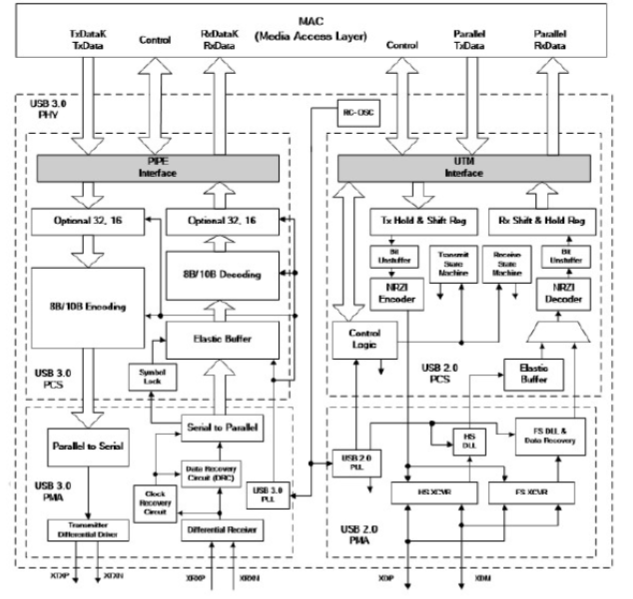A Universal Serial Bus (USB) transceiver is available for auxiliary devices. The PHY meets with the specifications of USB 3.0 (USB SuperSpeed), USB 2.0 PIPE, and UTMI. Without sacrificing speed or data throughput, the USB3.0 PHY IP transceiver is made to use little power and occupy little space on the chip. To offer complete support for high-performance designs, the USB3.0 PHY IP comprises a full on-chip physical transceiver solution with Electrostatic Discharge (ESD) protection, a built-in self-test module with inbuilt jitter injection, and a dynamic equalization circuit. The USB3 MAC layer supports several IP sources across the common PHY interface (PIPE). Utilizing constant power, inbuilt Jitter Injection Output, built-in Self-Test, and authorized changing of analogue circuit characteristics, internal test monitoring and jitter is minimized.

Deliverables
Layer Mapping Information in GDSII Format
Layout Exchange Format for Placement and Routing Visualizations
Standard Cell Characterization Data in Liberty Format
Behavior Modeling in Verilog Syntax
Circuit Connectivity with Timing Details in SDF Format
Layout Design Considerations and Application Recommendations
Reports on Layout Verification for Schematic and Design Rules